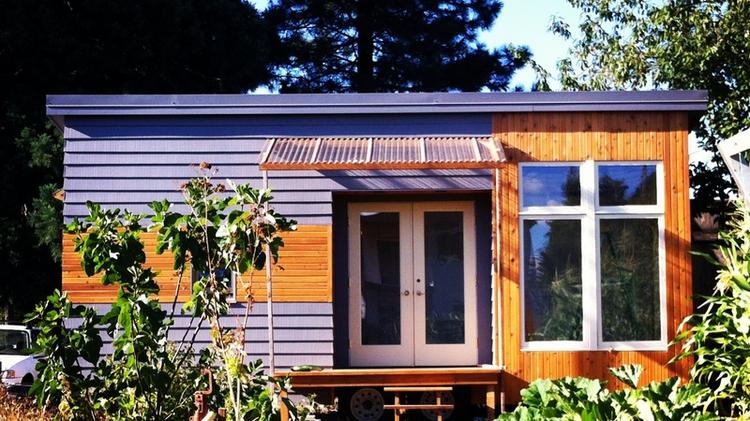
The "tiny house" might be something you associate with HGTV or Instagram, but the lifestyle movement is gaining interest in Albuquerque, too.
The tiny house movement refers to those who choose to live small, usually in a home that's between 100 and 400 square feet, and can be put on a 50-foot flatbed trailer to travel easily.
The movement is driven by several factors, from the rising cost of housing to those simply wanting to downsize and lead a minimalist lifestyle. It's also embraced by those looking to live more sustainably.
Though Albuquerque's housing costs are relatively low to begin with, there are people here interested in building a home that is customizable, affordable and yes, tiny.
Just look at this tiny home, built by the Durango, Colorado-based company Rocky Mountain Tiny Houses, delivered in October to a newlywed couple in the metro area. The cost of building such a house ranges from $51,000 to $57,000, the company said.
Melissa Perez, public information officer for the city's planning department, said the department has had a number of calls in the last few months asking about tiny homes.
Perez said people have inquired about which building codes apply to tiny homes. The growing interest is why the city released a quick guide to help tiny house builders navigate the process.
It's important to note only tiny homes that sit on a foundation are allowed in Albuquerque.
Tiny houses built on trailers would be considered RVs, which are not allowed to be lived in, according to city code. Tiny houses — or RVs — can't permanently attach to utilities, and you aren't allowed to cook in them.
RVs parked in single-family residential areas can only be lived in for a 14-day period per year per property.
Tiny homes on slabs or foundations, however, can be built in most residential areas, except for a few neighborhoods.
"Tiny homes, like any home, may be constructed in residential zones, provided the home meets all applicable development standards, including placement of the home on a permanent foundation, minimum required room dimensions and permanent heating facilities," Perez said. Click here to read the full article.














Comments